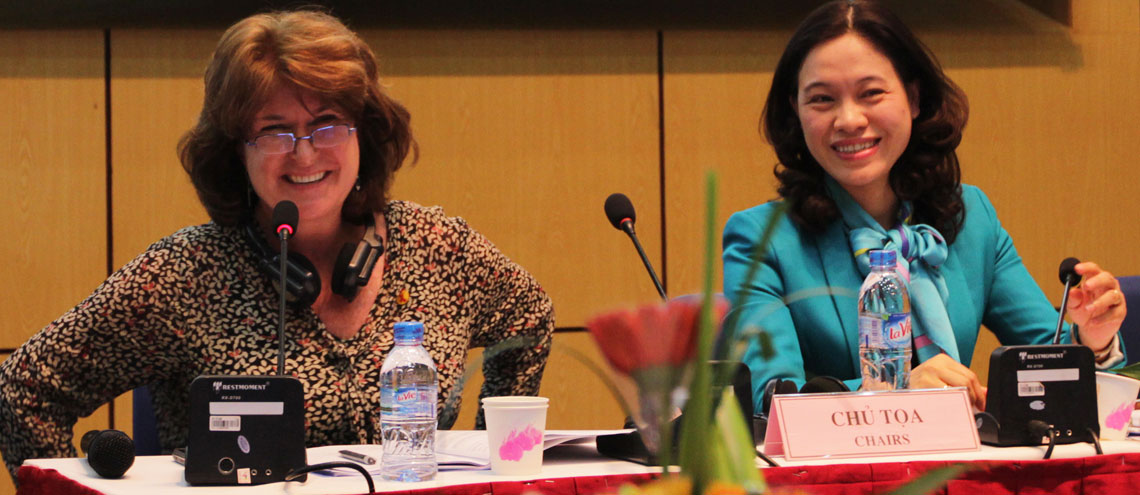Viet Nam and Asia-Pacific Countries Aiming for Zero New HIV Infections
Ha Noi, 29 August 2011 – United Nations (UN) and Vietnamese officials participating in the 10th International Congress on HIV/AIDS in Asia and the Pacific (ICAAP10) are urging for better focused programmes, stronger legal and policy reforms and more sustainable funding for HIV from domestic resources.
ICAAP—the biggest regional event on HIV/AIDS—is taking place 26-30 August in Bussan, Korea.
The response to HIV in Asia and the Pacific is currently at a crossroads where there are impressive gains across the region but progress is fragile. Most countries including Viet Nam are a long way from achieving universal access goals for HIV prevention, treatment, care and support.
“Getting to zero new HIV infections in Asia and the Pacific will demand national responses based on science and the best available evidence,” said Michel Sidibé, Executive Director of the Joint United Nations Programme on HIV/AIDS (UNAIDS). “HIV programmes must be sufficiently resourced and solidly focused on key populations. Investments made today will pay off many-fold in the future.”
There has been a dramatic 20% decline in new HIV infections between 2001and 2009 in the region, according to a new UNAIDS report, HIV in Asia and the Pacific: Getting to Zero, launched at ICAAP10. However, there were still an estimated 4.9 million [4.5 million–5.5 million] people living with HIV in Asia and the Pacific in 2009. Viet Nam is among the 11 countries in the region most affected by HIV.
The report also shows that new HIV infections in the region remain concentrated among key populations: people who inject drugs, people who buy and sell sex, men who have sex with men (MSM), and transgender people.
In Viet Nam, an estimated one in five males who inject drugs was living with HIV in 2009. For men who have sex with men, the infection level is also very high – at 16.7%. There has been progress in reducing the risk of HIV infection for female sex workers. National prevalence for this group was reported to be 3.2% in 2009. But hotspots of high prevalence still occur, such as in Hai Phong where HIV prevalence among street-based female sex workers in 2009 was 8.5%.
Across the region, the number of people accessing life-saving antiretroviral treatment has tripled since 2006. But at the end of 2009, more than 60% of people in the region who were eligible for treatment still could not access it. In Viet Nam, there has also been an 18-fold increase in the number of people on treatment in the last five years, but more than half of all adults in need still have no access to antiretroviral treatment.
To ‘get to zero’, Viet Nam and the region need more than ever bold actions and strengthened leadership to address these challenges, build upon scientific advancements and commitments made in the 2011 UN General Assembly Political Declaration on HIV/AIDS.
Viet Nam is among the first countries to pilot Treatment 2.0 – a joint initiative of the World Health Organization (WHO) and UNAIDS that takes a holistic approach to making HIV treatment simpler, cheaper and more effective. Pilots will take place in Can Tho and Dien Bien provinces between October 2011 and December 2012.
“Viet Nam is happy to pilot Treatment 2.0 because we need to do more, better and sustain the national response to HIV” said Associate Professor Dr Bui Duc Duong, Deputy Director, Viet Nam Authority of HIV/AIDS Control (VAAC), who presented the Treatment 2.0 pilot yesterday at ICAAP10 and showcased the country’s leadership in universal access to HIV services.
Contact:
UN Communications Office in Viet Nam | Nguyen Thi Bich Hue | tel. 3822 4383 Ext.105 |bichhuen@unaids.org




